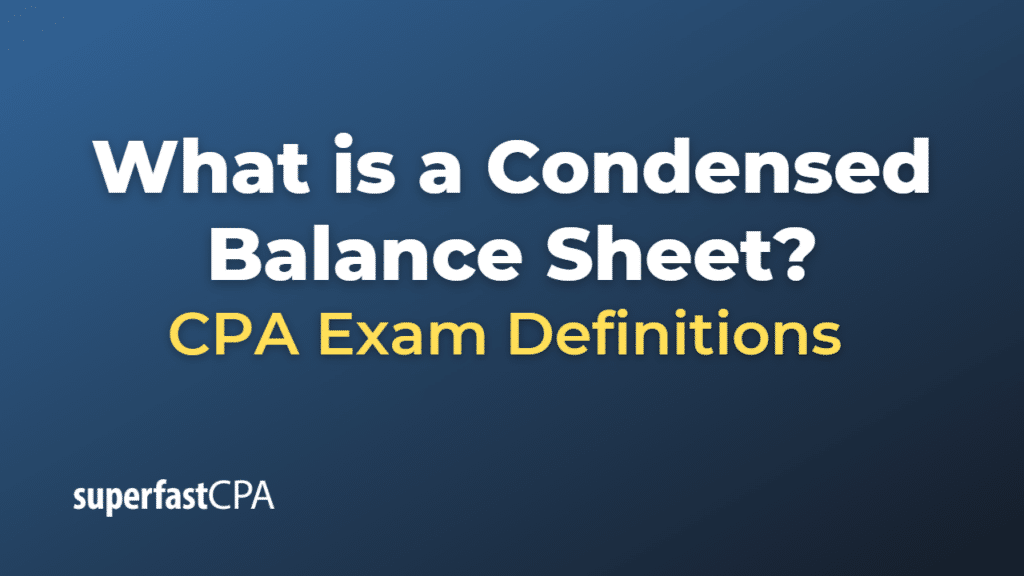Condensed Balance Sheet
A condensed balance sheet is a summarized version of a company’s full balance sheet, presenting only the essential information in a simplified format. The primary purpose of a condensed balance sheet is to provide a quick and easy-to-understand overview of a company’s financial position at a specific point in time. It includes the key elements of a regular balance sheet, such as assets, liabilities, and equity, but with less detail and fewer line items.
A condensed balance sheet typically consists of the following sections:
- Assets: This section shows the company’s total assets, which are the resources the company owns or controls with an expectation of future economic benefit. In a condensed balance sheet, assets may be categorized into current assets (e.g., cash, accounts receivable, inventory) and non-current assets (e.g., property, plant and equipment, intangible assets).
- Liabilities: This section presents the company’s total liabilities, which represent the company’s obligations or debts to other parties. In a condensed balance sheet, liabilities may be grouped into current liabilities (e.g., accounts payable, short-term debt) and non-current liabilities (e.g., long-term debt, deferred tax liabilities).
- Equity: This section displays the company’s total equity, which represents the residual interest in the company’s assets after deducting its liabilities. In a condensed balance sheet, equity may include components such as common stock, retained earnings, and other comprehensive income.
A condensed balance sheet can be useful for various stakeholders, including investors, creditors, and management, as it provides a high-level view of a company’s financial health. However, it’s important to note that a condensed balance sheet may not provide sufficient detail for a comprehensive analysis of a company’s financial position. In such cases, a full balance sheet with detailed line items and accompanying financial statements would be necessary for a thorough evaluation.
Example of a Condensed Balance Sheet
Let’s consider a hypothetical example of a condensed balance sheet for XYZ Corporation as of December 31, 2022.
XYZ Corporation
Condensed Balance Sheet
As of December 31, 2022
ASSETS
Current Assets:
Cash and cash equivalents: $50,000
Accounts receivable: $30,000
Inventory: $20,000 Total
Current Assets: $100,000
Non-Current Assets:
Property, plant, and equipment: $150,000
Intangible assets: $50,000
Total Non-Current Assets: $200,000
Total Assets: $300,000
LIABILITIES
Current Liabilities:
Accounts payable: $20,000
Short-term debt: $30,000
Total Current Liabilities: $50,000
Non-Current Liabilities:
Long-term debt: $80,000
Deferred tax liabilities: $10,000
Total Non-Current Liabilities: $90,000
Total Liabilities: $140,000
EQUITY
Common stock: $100,000
Retained earnings: $50,000
Other comprehensive income: $10,000
Total Equity: $160,000
Total Liabilities and Equity: $300,000
This condensed balance sheet for XYZ Corporation presents a summarized overview of the company’s financial position on December 31, 2022. The total assets of $300,000 are categorized into current assets and non-current assets, while total liabilities of $140,000 are divided into current and non-current liabilities. The equity section lists components such as common stock, retained earnings, and other comprehensive income, with a total equity of $160,000.
This simplified format provides a high-level view of XYZ Corporation’s financial health, making it easier for stakeholders to grasp the company’s overall financial position quickly. However, for a more in-depth analysis, a full balance sheet with detailed line items and accompanying financial statements would be required.













